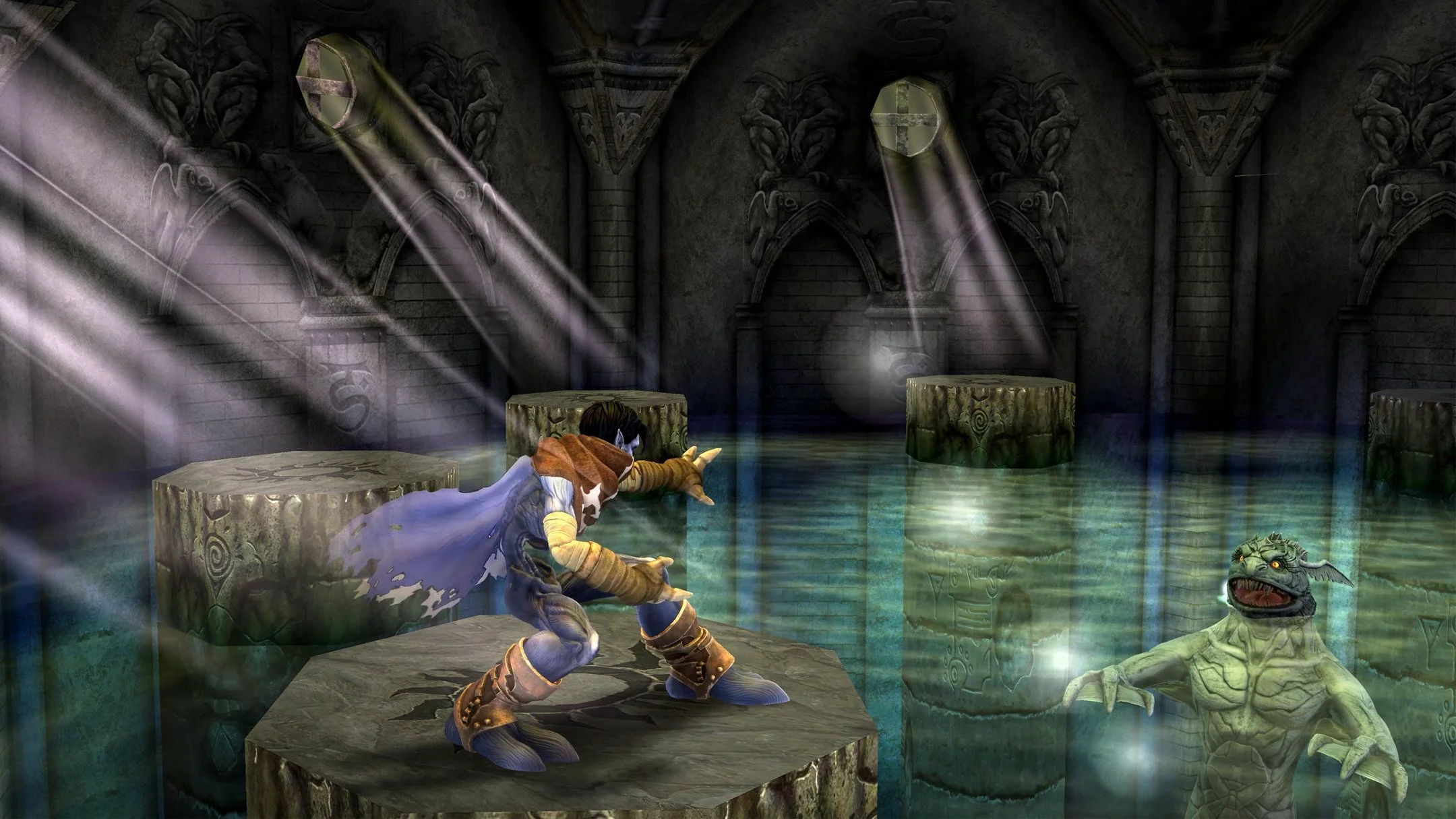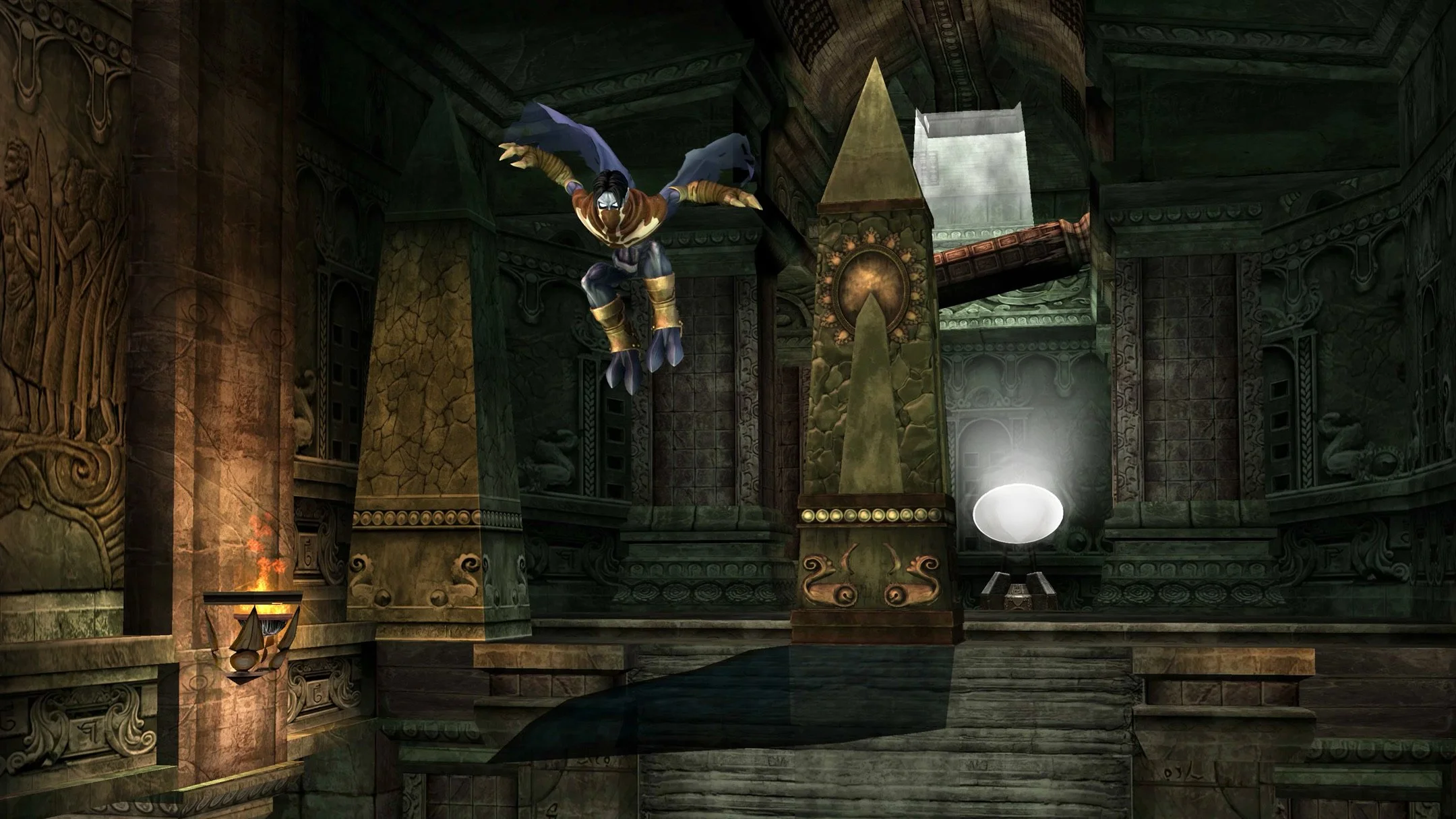Preserving the Soul.
Legacy of Kain: Soul Reaver has been a treasured title to many, despite the franchise being shelved for the past two decades. The conflict between Raziel and Kain was at the forefront of the story, a game written by Amy Hennig and Seth Carus. While Amy would go on to start work on Uncharted during production on Legacy of Kain: Defiance, the final title in the series, her work here to craft a story-focused vampire adventure is still a truly amazing game for its time. However, regardless of the work done here by Aspyr to spruce up its visuals, it’s also a game that never really played particularly well.
This remastered collection contains Legacy of Kain: Soul Reaver and its slightly improved sequel, even if its production time was accelerated to meet the publisher's demands. It’s a shame that Defiance wasn’t added to this package, as it serves as an essential follow-up to those titles despite its poor reception. Regardless, to have these games available on modern hardware and be introduced to a whole new audience is nonetheless thrilling and hopeful for the IP’s future.
Within minutes, it is evidently clear what Aspyr has done here to revamp the visuals of the original games, allowing you to swap back and forth between the original’s graphics and the overlay that Aspyr has improved here. This effect is essentially the same treatment that both the Master Chief Collection and the recent Tomb Raider Collection have seen done to preserve the feel of the original games. Textures and lighting are improved, with far more detail given to its cast. However, despite the vast improvements across nearly every polygon you can explore, some locations, tunnels, and transition environments continue to provide a very flat experience, especially in the original game.
Soul Reaver takes place 1500 years after the events of Blood Omen, the first title in the series starring the titular Kain. Soul Reaver; however, follows the character Raziel as he is killed by Kain in the game’s opening moments. Left to decay in the vast abyss below for half a millennium, Raziel is saved by The Elder God to become his own weapon against Kain, his Soul Reaver. This pushes the plot to be about Raziel’s revenge against Kain as he works through his brothers to get to him, discovering that time has not been so kind to his brethren. What was clear then as it is now, is that Soul Reaver looked to be a far grander tale than what was produced, with an ending that clearly hinted at more. This was later confirmed to be the case as entire areas were shelved during production as well as the inclusion of a fifth brother, Turel, and a more fitting battle against Kain that never saw the light of day.
What is really interesting about this collection is that many of these scrapped areas are included and playable, albeit vastly incomplete. It’s a bizarre addition that is greatly appreciated, even if they are not injected into the main game and are only selectable from a menu. Regardless of how they are part of this package, to have a glimpse into what might have been is very impressive and something we often don’t see publishers or developers sharing publicly. Often, these types of inclusions are part of behind the scenes videos or documentaries, so being able to actually jump into these cancelled locations is a real treat.
Soul Reaver 2 dives deeper into the destiny of Raziel. While he continues his quest to exact revenge on Kain, he begins to discover more about his life as a human, making the journey more about self-discovery than fully consumed by revenge. It’s a nice balance that allows Soul Reaver 2 to not just be the first game all over again. As the game begins with Raziel being sent far into the past, it allows for a greater change in perspective that was lacking in the original. It also does a great job of expanding upon the lore in ways that are not just exposition dumps. Environments are far bigger as the change from PS1 hardware to the PS2 is certainly noticeable. This; however, limits the improved visuals as some areas are entirely untouched and don’t see a single pixel changed.
Soul Reaver was a mixture of exploration, puzzle-solving, combat, and platforming when you break it down into its core elements. While the sequel follows those same concepts, the puzzles in Soul Reaver 2 are significantly better as Soul Reaver relied heavily on block puzzles just a bit too much. The pacing of the journey in Soul Reaver 2 is improved over its predecessor but also has its share of drawbacks as the story can feel a tad over-written as Raziel will narrate everything, including lore reasons for a checkpoint system or where you can save your progress. All in all, it is a bit too much despite Michael Bell's beloved performance as Raziel.
Despite their differences, both games share in their core fundamentals. You still rely on the souls of the living to replenish your health, and use the spectral realm to aid in Raziel’s travels. The ability to shift between these realms at will was a technical achievement back then and one rarely used to as good of an effect even today. Seeing the world shift and morph around you never loses its appeal and allows both games to have some impressive level design as you constantly question the very environment around you.
As Soul Reaver 2 directly follows the ending of the first game, you start with nearly everything Raziel had unlocked, apart from a few powers that don’t serve a purpose here. You’ll be equipped with the Soul Reaver from the start, but it is changed to be more of a burden to Raziel than his savior, allowing for a greater focus on the other forms of combat available to you. Combat itself is slightly improved in its sequel as you’ll have more depth given to Raziel’s attacks, allowing for two attack buttons instead of one. While both games have executions, Soul Reaver 2 applies them to the end of your standard attacks, whereas in Soul Reaver, they were their own button, limiting what you could do in the middle of combat.
As you shift between realms, the enemies you face change as well. Spectres and various creatures plague the darker and more twisted realm, allowing Raziel to earn back enough energy to shift back to the land of the living. While you can shift back to the spectral realm at any point, which allows you to pass through otherwise obstructed gates, you’ll need to use special portals to return back, which are required to open doors or climb walls, each of which are powers you’ll earn from defeating each of your brethren shortly in Soul Reaver.
Part of the appeal of Soul Reaver and its sequel was how the game didn’t hold your hand and relied on your discoveries to figure out where to go. You’ll be given hints and while a compass has been added, both games have a level design that can entice exploration but also can confuse you on where to go. While this may deter some players or those who would love a bit of yellow paint applied to certain parts of the environment, or even an objective cursor, there is something refreshing about a game that hides your path and forces you to really embark on a journey to find it.
Part of this collection has a lot of really cool additions. You have loads of concept art, a lore map, as well as the inclusion of a photo mode, even if you cannot use it during cutscenes. While the details leading up to release mention “modern” and “classic” controls, this doesn’t appear to the case as the game is defaulted to the new modern controls with remappable buttons to tailor the experience to what you want from it. The news leading up to the game also mentioned a rebuilt camera, but as it often gets in your way in Soul Reaver, it’s fine enough in the second game but not a improvement that I recall when thinking back on the original games.
Fans of the games have waited patiently for this series to return, or even to have the original games available on modern hardware. While this collection does a respectful job of preserving the original two games, I do wish more work had been done to make the environments really stand out as much as the vastly improved character models do. Still, the Legacy of Kain: Soul Reaver 1&2 Remastered Collection is a great attempt to improve these games, even if they never really played that well in the first place. While they are clearly dated in their design and feel, there is nonetheless something special about Raziel’s journey, and the technical might those games presented way back when.
Developer - Aspyr, Crystal Dynamics.
Publisher - Aspyr. Released - December 10th, 2024. Available On - Xbox Ones, Xbox Series X/S, PS4, PS5, Nintendo Switch, PC. Rated - (M) - Blood and Gore, Violence. Platform Reviewed - Xbox Series X/S. Review Access - A review code was provided by the publisher for the purpose of this review.















Jeff is the original founder of Analog Stick Gaming. His favorite games include The Witcher III, the Mass Effect Trilogy, Hi-Fi Rush, Stellar Blade, Hellbade: Senua’s Sacrifice, and the Legend of Heroes series, especially Trails of Cold Steel III & IV.